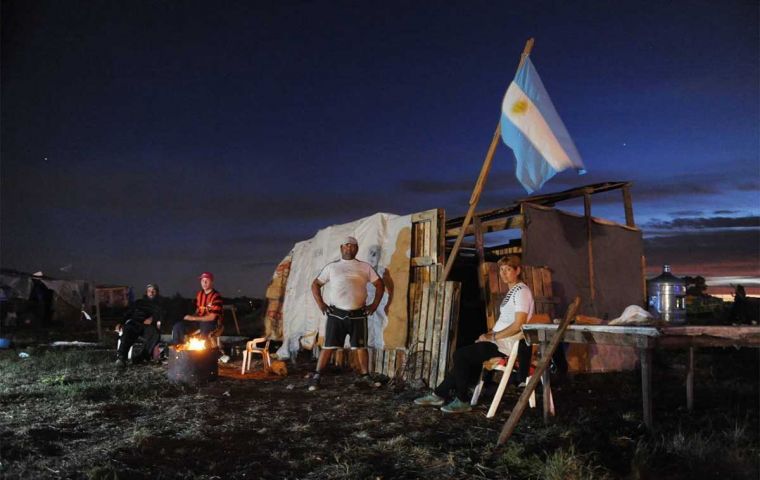MercoPress. South Atlantic News Agency
Poverty on the rise in Argentina, study finds
 According to the study, 32.5% of people with a regular job live “in households in poverty.”
According to the study, 32.5% of people with a regular job live “in households in poverty.” According to a study published Monday by the Observatory of the Argentine Social Debt (ODSA for its acronym in Spanish), poverty rose to 55.5% of the population, affecting nearly 25 million people in the South American country in the first quarter of 2024. At the same time, indigence (a situation even below poverty) reached 17.5% with a food insecurity scope of 24.7% of the population.
The observatory, which belongs to the Argentine Catholic University (UCA) where President Javier Milei once taught Economics, has measured socioeconomic indexes for years.
In urban areas, the study found that poverty -determined by the value of the basic food basket- reached 24.9 million residents while some 7.8 million were in extreme poverty or indigence.
”Total food insecurity for urban areas surveyed by the ODSA-UCA survey, reaches 24.7% of people, 20.8% of households, and 32.2% of children and adolescents. On the other hand, 10.9% of people, 8.8% of households, and 13.9% of children and adolescents (NNyA) are in an even more serious situation, with severe food insecurity,“ the ”Structural social debts in Argentine society“ report noted.
”When considering the [Buenos Aires Metropolitan Area] AMBA, the values of total food insecurity are located in 26.4% of people, 21.8% of households, and 35% of children and adolescents. When considering severe food insecurity they stand at 9.9%, 12.7%, and 16.5%, respectively,“ the document went on.
According to the study, 32.5% of people with a regular job live ”in households in poverty.“
”They may seem like cold numbers, but behind them is a deep feeling, there are faces, there are poor or destitute families experiencing hunger and poor nutrition for economic reasons; there are unemployed who cannot access quality work or poor over-employed workers; there are mothers who cannot meet the needs of raising their children, given the scarcity of resources and time of life that poverty generates,“ Observatory Coordinator Eduardo Donza told local media.
”The current crisis has undoubtedly aggravated these problems that are structural in Argentine society. In this regard, let's take into account that during the first quarter, poverty has exceeded 50%, and the extreme poverty rate has reached 18% of the population“, he added.
Regarding education, 23% of children between 3 and 5 years old do not attend formal educational establishments, 0.4% of those between 6 and 12 years old do not attend elementary school, 9.1% attend primary school over age and 35.3% of young people between 18 and 29 years old did not finish high school.
”These indicators express adverse values, despite the fact that the general system of public management (80.7% of students under 18 years old) is strengthened by the action of private management (12.6% in secular private establishments and 6.8% in religious establishments),” it was specified.
Of the economically active population (those within a working age), 26.5% have a precarious job and 24.3% face unstable underemployment.
On a brighter side, child mortality was reported to have gone down between 2005 and 2022, albeit unevenly and with different indexes depending on the part of the country under consideration.




Top Comments
Disclaimer & comment rulesCommenting for this story is now closed.
If you have a Facebook account, become a fan and comment on our Facebook Page!